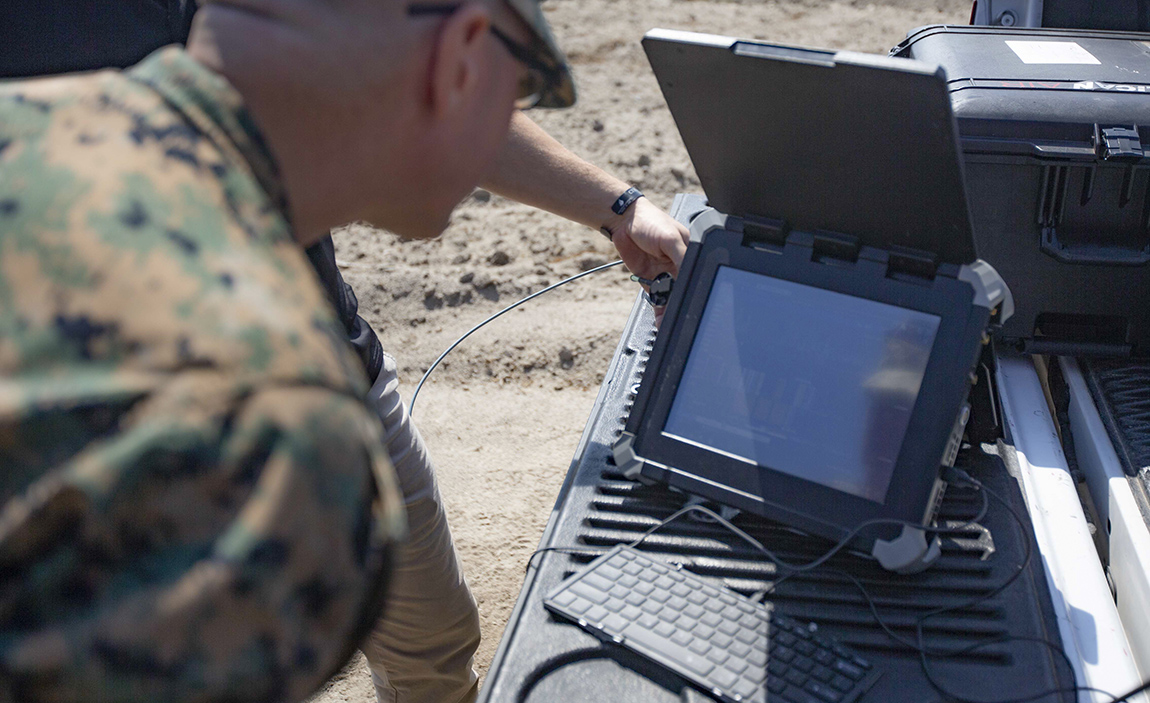Seeing Signals: Defending the RF Domain

Wireless communications are at the heart of mission success
When the emerging technology known as radio began to be used during World War I, its importance as a military tool quickly became obvious. Forces could communicate across and within domains: Vessels at sea could now receive vital information and pilots could better coordinate with ground forces. Before long, the technology also became a countermeasure, as evidenced by the foiling of a German airship raid due to the transmission of phony signals by the French.
Today, the use and implications of wireless communications on the battlefield has expanded far beyond the 2,000-yard range of those early devices. As shown by the potential uses of portable devices like cellphones, tablets, laptops, and wearables and the abilities of military equipment like vehicle sensors, digital radios, radars, and drones, the power of wireless technology as a modern defensive asset is unquestionable.
Yet the ubiquitous and proliferating nature of this technology means it can be as much of a threat as it is a tool — anyone from a lone actor to nation states can employ devices with Wi-Fi, Bluetooth, Zigbee, or RF signal capabilities with intent to cause harm. As such, the ability to overmatch adversaries in the electromagnetic and radio frequency (RF) spectrum environment in which such devices operate is imperative. Doing so, however, first relies on our ability to both detect and differentiate between signals.
Using an adversary’s signals against them, while protecting our own
The ability to detect signals on the electromagnetic spectrum presents both opportunity and vulnerability for our military. Capturing and deciphering signals helps our forces detect an adversary’s presence, can reveal the size and location of their troops, and helps uncover the type of technology they are using. However, the wireless communication devices our forces rely on also create a signature and thus present similar risks. Further, RF signals can come from any domain and range greatly in strength and size — from low-power and short-range Bluetooth headsets to high-definition live video feeds transmitted by overhead drones.
Overcoming these challenges and establishing RF spectrum dominance requires technology that can detect a wide range of known and unknown signals, and that can be deployed and scaled with minimal effort across mission sets and needs. Additionally, advanced software is required to decipher and differentiate the details of each signal so that operators can understand the environment around them and accomplish their mission.
A powerful and scalable passive RF detection solution
Defense industry leader CACI delivers advanced hardware and sophisticated software in a rugged and portable RF detection and monitoring system with Spectrum Guard. Small, lightweight, and easy to use, the lunchbox-sized device weighs just 12 pounds, and can run off battery, vehicle, or traditional power sources. It allows our armed forces and allies to:
Observe and assess environments
- Detect RF signals ranging from 1 kHz-26.5 GHz (up to 40 GHz with optional frequency extender capabilities) in support of static, vehicle, or mobile operations
- Collect, record, and analyze Wi-Fi, Bluetooth, Zigbee, cellular, and analog and digital radio RF signals and data
- Determine the location of signal-emitting devices
- Discern the hardware manufacturer of detected devices
Control the spectrum
- Detect jamming or spoofing and make channel adjustments to overcome the interference
- Determine their own electronic signature to better understand how it appears to adversaries and to make countermeasure adjustments in real time
Adapt to meet mission needs
- Connect and scale up with other Spectrum Guard devices to create a mesh of detection capabilities across vast areas
- Set user-defined parameters for specific RF spectrum sweeps
- Integrate with third-party and existing analysis and situational awareness tools
- Monitor and control systems from a distance via command & control solution, named Resource Manager
~12 lbs.
Weight of one Spectrum Guard
1 kHZ – *40 GHz
Frequency detection range of a Spectrum Guard
Fifth-generation
RF detection and monitoring system
*With optional Frequency Extender Kit; otherwise 26.5GHz is peak range
“Our largest implementation of Spectrum Guard in a single location has over 300 sensors connected to it. Over a four-square-mile campus, we’re able to geolocate signals all the way down to a single Bluetooth hearing aid.”
Vice President of Spectrum Reconnaissance at CACI and President of Charon Technologies LLC
Currently deployed across mission sets around the world, Spectrum Guard and its capabilities are proving vital to mission success. The device is currently in use with the 1st Multi-Domain Task Force at sites across the Indo-Pacific, and recently played a crucial role in a U.S. Marine exercise in the same region by allowing forces to test a hub-spoke battlefield concept in real time.
The ability to scale with the rising digital-based threat
The Spectrum Guard platform originated from broadband capabilities to view the entire RF spectrum originally developed to support the US intelligence community. Now in its fifth generation, today’s version is a compact powerhouse with multiple times more capabilities. With the rise of more digital threats — including the potential for swarms of hundreds of remotely operated drones — RF signal detection technology will continue to play an increasingly important role on the battlefield. To ensure our forces continue to have the situational awareness they deserve, CACI engineers are continually developing and advancing the platform.
“In the third generation of platforms, we developed the capability to perform forward processing. Each version of the platform since can process signals independently and only send the results back. This level of software sophistication and the investments we continue to make in developing such advancements are what makes our products, like Spectrum Guard, continue to stand out.”
Vice President of Spectrum Reconnaissance at CACI and President of Charon Technologies LLC
